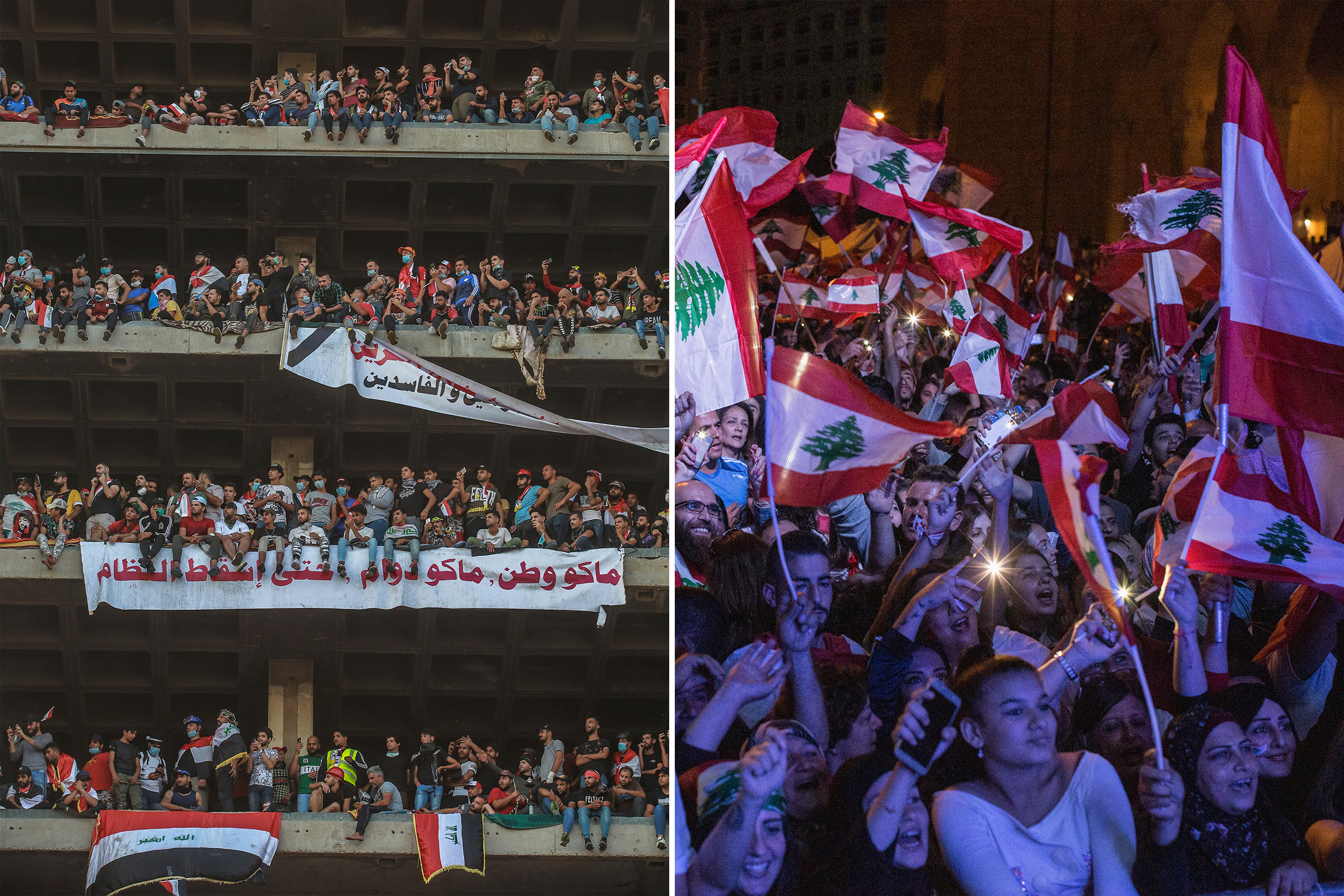
Since October, protests in Iraq and Lebanon have re-energized the Middle East region as hundreds of thousands of young people descend onto public squares, repeating 2011 Arab Spring slogans that call for regime downfall. But while Iraq and Lebanon could offer great promise if protesters learn from past failures in the region, they could also prove to be bloodier if Iran gets its way.
Middle East protests that have taken hold in the past decade have had their own unique characteristics, but similarities between Iraq and Lebanon are uncanny. Both are highly segmented societies that have undergone painful sectarian civil wars. Both have power-sharing constitutions or political pacts that attempt to keep the peace by dividing spoils of the state, government roles and administrative positions, and parliamentary seats along ethno-sectarian lines. But the more ominous similarity is the well-known interference of Iran into their domestic politics.
Iran’s financial, political and military support for Lebanon’s Hezbollah and for Iraq’s dominant political class in Baghdad from the Dawa party to the Hashd al-Shaabi militant group is clearly menacing. In the early days of Iraq’s protests in October, black clad snipers believed to be Iranian forces took to Baghdad rooftops to take pot shots at protesters using live ammunition; in Lebanon, unknown assailants believed to be with Hezbollah tore down protesters’ tent encampments and physically assaulted protesters in Beirut streets.
Iran’s Supreme Leader Ali Khamenei has already expressed his views on Lebanese and Iraqi protests, a reminder that Iran knows how to deploy armed forces to tamp down protests. The not-so-subtle warning was not just about how Iran cracked down on its own 2017-2018 protests against corruption and economic gloom— arresting almost 7,000 people and reacting to protests with force—but how Iran effectively propped up the Assad regime to annihilate protesters with brutal force.
Protesters have learned from previous Arab Spring masses to use their vast numbers to barricade themselves from security forces and not give up an inch of Baghdad’s Tahrir Square and Beirut’s Martyrs’ Square. They use social media to garner global attention and keep the cameras rolling; and in the case of Iraqis, they find alternate means of getting their messages and videos out to the world when the government shuts down the Internet. Iraqi and Lebanese activists have used non-sectarian and nationalistic messages to counter the existing narratives of political incumbents. In Iraq, hashtags include ‘I want a nation’; in Lebanon ‘all of them, meaning all of them’. They have both held up posters that point to sectarianism as the source of ills in their countries. Increasingly they are also fighting against messaging from the Iranian government and its local media, which says protesters are paid tools of Western intelligence services.
In Lebanon and Iraq, protesters want an overhaul of the entire political structure that uses sectarianism as an excuse for ineptness, depends on cronyism that leads to systemic corruption, and encourages political in-fighting that leads to indecisive policies. Unlike previous Arab Spring movements, they are no longer satisfied with the mere removal of a prime minister here and a president there.
Both countries suffer from enormous dilapidation and underfunding of public infrastructure and services. Young protesters have no memory of foreign invasions and civil wars; they just want a functioning government to deliver consistent electricity, responsibly manage state budgets, and find ways to encourage job growth. Too many Iraqis complain that the security sector is one of the few places to find employment; young Lebanese feel that with 40% youth unemployment they have to leave the country with the vast majority of other Lebanese to find decent work.
Iraq sits on a healthy current account surplus, and earned $65 billion in oil export revenue in 2018 — yetits government cannot seem to provide clean drinking water to the oil-rich region of Basra. The Lebanese parliament had the audacity to ask for a 20 cent tax on citizens’ WhatsApp calls, while its Prime Minister had given $16 million to a South African supermodel for no clear reason.
Like previous Arab Spring protests, Iraqis and Lebanese see corruption as the cause of their countries’ ills. But they have an advantage that neither Egypt, Tunisia, Libya, Bahrain, or Syria had: they are imperfect and nascent democracies. Using the ballot box to usher in competent new leaders is a strategy and avenue for change that other Arab youth did not have.
This is also a challenge as the structure of the democratic process in both Lebanon and Iraq favors sectarian parties over brokerage ones. The incumbent political class will not want to dismantle the inefficient sectarian system that brought them to power. And will Iran crush the protesters before they have a chance to get their technocratic caretaker governments? For now, the at times festive and carnival nature of the Iraqi and Lebanese protests mask nervous fears on the streets that Iran would deploy its local militias to put an end to the protests. That would foreshadow an end to the demonstrations, much like previous Arab Spring protests.
More Must-Reads from TIME
- Why Biden Dropped Out
- Ukraine’s Plan to Survive Trump
- The Rise of a New Kind of Parenting Guru
- The Chaos and Commotion of the RNC in Photos
- Why We All Have a Stake in Twisters’ Success
- 8 Eating Habits That Actually Improve Your Sleep
- Welcome to the Noah Lyles Olympics
- Get Our Paris Olympics Newsletter in Your Inbox
Contact us at letters@time.com